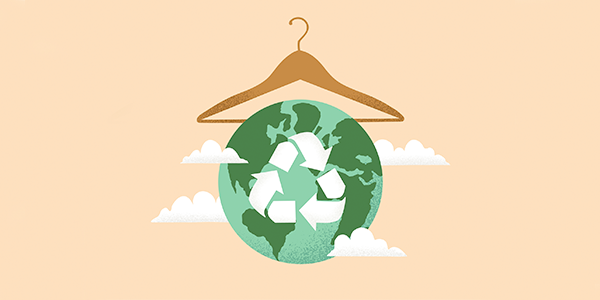
Enter your shipment number.
Sustainable Retail and Transit Packaging: OIA + Garments on Ditto
(Portland, OR) - Efficient logistics planning results in fewer costs, waste, truck kilometers, bunker fuel, warehouse space, and increased revenue.
1 July 2016

The retail industry’s tectonic shift toward eco-fashion is real. There’s a renewed focus on clothing made from raw, organic materials; nontoxic dyes or bleaches; low water usage; and made under socially responsible conditions. This is only part of the story behind how the retail and fashion industry is building sustainability.
But what about the other aspects of the retail apparel loop: how the clothing is packaged, shipped, warehoused, displayed, marketed, and sold? Can the logistics and packaging surrounding the garments be more sustainable as well? Can it all be tied together to produce not only a more efficient system but also one that builds brand loyalty and costs less?
Sustainable Logistics
Although logistics companies don’t typically source the material or produce the products, they do move the product from point A to point B. Cost savings and sustainability enhancements can be achieved when retailers and their fashion brands address supply chains and packaging as part of their sourcing and manufacturing processes. Efficient logistics planning results in fewer truck kilometers, less bunker fuel, less warehouse space, and thus increased revenue and reductions in costs and waste.
As an example of supply-chain optimization, using a sustainable hanger rather than a virgin plastic hanger in shipping can result in savings up to an astounding 20 percent. And it eliminates the plastic hanger, of which an estimated 85 percent are landfilled at the store end, meaning less spent on disposal. Compression packaging can also be used to pull air out of packaging, increasing efficiencies up to 25 percent. Another example of impact savings by implementing “strategic packaging” would be to optimize the retail packaging of garments, which reduces the use of toxic glues and packaging footprint as well as simplifies assembly. This reduced “packaging footprint” enables more product to be shipped in an ocean container or 53-foot trailer. Think about that for a minute: reduced transit costs, reduction in carbon footprint and lower packaging costs. One producer of footwear has been able to reduce the number of containers shipped from manufacturing sites in Asia to the U.S. market by almost 15 percent. This was done through packaging optimization.
Other logistics efficiency tools include:
- Planning transport routes and collaborating with other companies along “green corridors” and ensuring trucks are full in both directions.
- Offering “green shipping” options that use cleaner, but slower, transport modes such as ocean and rail and reducing truck and air miles.
- Reducing processing errors, which result in using more energy-intensive transport to meet delivery windows.
- Reduce packaging waste by optimizing carton size to the item being shipped.
Eco Retailing: Sustainable Messaging
Making garments out of organic fabric, shipping the product in the most sustainable method possible and using recyclable packaging reduces costs. But there is a significant marketing win too. If you do not communicate your good work to your consumer, it wastes a powerful marketing tool that can build brand loyalty and your reputation as a sustainability leader. Creating a profitable sustainable retail environment is not only possible, it’s essential for survival. Natural lighting, organic or recycled counters and floors and elimination of all plastic and acrylic is the first step. Removing the sea of plastic hangers is an innovative step that can reap significant cost and sustainability rewards. Sturdy sustainable hangers made from recycled paper fiber bring out the beauty of organic materials and convey your marketing message. Using reusable or bioplastic shopping bags helps to get your message out as well.
Combining All Three
Taken individually, all three areas—eco fashion, eco logistics and packaging, and eco retail—all bring savings and efficiencies to the retail operation. Each area should be focused on and maximized as intelligently as possible.
Combining the three builds a unique and authentic platform the consumer can touch and connect to. By demonstrating your forward-thinking values and priorities, you build brand loyalty and trust with your consumer. It’s a no-risk vehicle to lead by example. And with a younger demographic that shops their convictions, it’s a simple investment for a greener future.
This article was originally published in California Apparel News as “Industry Voices: EcoFashion vs. EcoLogistics”, and has been republished here with the consent of the original content owner.
